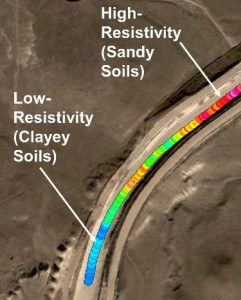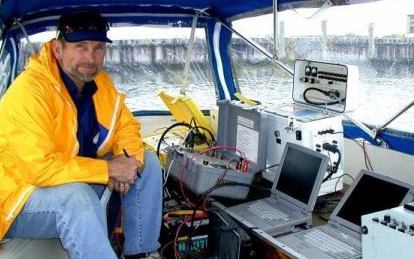Streaming IP—Continuous Marine Resistivity Survey Method
Overview
Streaming IP is a geophysical data-collection method used in shallow freshwater and marine environments, often to delineate saltwater-freshwater interfaces (saltwater intrusion) or submarine clays and sediments.
Zonge builds streaming IP / marine resistivity survey data-collection systems modified to the needs of individual clients and provides expert consultation in the use of the method.
Streaming IP-resistivity survey method
Streaming IP refers to continuous resistivity profiling using a custom data-acquisition system installed aboard a small inboard or outboard powered vessel, along with streamer cables containing buoyed electrodes at various spacings. The system continuously records dipole-dipole resistivity samples at these spacings. With 10-meter dipole spacing, the depth of investigation ranges from 20-30 meters below surface.
The method requires that precise location information is recorded along with the Resistivity and Induced Polarization (IP) measurements. GPS positions for the samples are merged with the resistivity data during processing or in real-time as part of the navigation system.
Up to 40 line kilometers of data per day can be collected using this method. The resistivity profile data is then imaged using a 2D smooth-model inversion program and a high-resolution map is created by adjoining the overlapping segments.
NanoTEM® shallow freshwater survey method
Continuous resistivity measurements for some applications in shallow freshwater environments can also be made accurately and cost-effectively with the NanoTEM® method using boat-towed transmitter and receiver loops. NanoTEM® is an early-time, Transient EM (TEM) method developed by Zonge in the 1990s.
The Zonge Dynamic NanoTEM® (DNT) is a portable transceiver with multi-parameter, multi-timegate recording capability designed for making continuous/mobile resistivity measurements. The small size and set-up flexibility of the Dynamic NanoTEM® Transceiver can make collecting high-quality, shallow-water resistivity data a very cost effective option.



